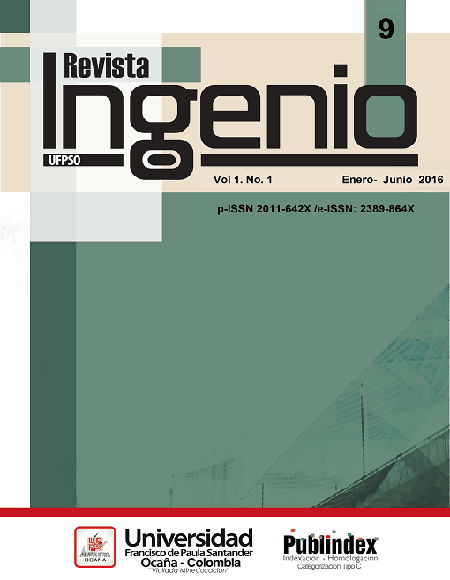Identification of valves and flanged joint for monitoring fugitive emissions according to EPA method 21
Identificación de válvulas y uniones brindadas para monitoreo de emisiones fugitivas según el método 21 de la EPA
Main Article Content
Este documento presenta la identificación de válvulas y uniones bridadas de una planta para el procesamiento y transformación de hidrocarburos. La identificación se realizó con el fin de monitorear los elementos (uniones bridadas y válvulas) acorde a los lineamientos establecidos por el método 21 de la Agencia de Protección ambiental Americana (EPA, por sus siglas en inglés) para la reducción de emisiones fugitivas de compuestos orgánicos volátiles (VOC, por sus siglas en inglés), perjudiciales para la salud y el medio ambiente. La identificación se llevó a cabo por medio de los diagramas de instrumentación y tubería (P&ID, por sus siglas en inglés). Con los datos recolectados se estableció un procedimiento de monitoreo para estos componentes, posteriormente se monitorearon una cierta cantidad de elementos, de los cuales, se obtuvo la emisión del fluido transportado en partes por millón y se planteó una posible solución para reducir las emisiones fugitivas
Downloads
Publication Facts
Reviewer profiles N/A
Author statements
Indexed in
- Academic society
- Universidad Francisco de Paula Santander
- Publisher
- Universidad Francisco de Paula Santander
Article Details
A-jalil, Hashim, M., Anwar, J., & Sapia, N. (2012). Fugitive Emission Reduction Using Mixed Integer Linear. Energy Procedia , 14, 1870-1876. DOI: https://doi.org/10.1016/j.egypro.2011.12.1181
Bramsiepe, C., Pansegrau, L., & Schembecker, G. (2010). A model to predict fugitive VOC emissions from liquid charged flange joints with graphite gaskets. Chemical and Engineering Journal , 1385-1394. DOI: https://doi.org/10.1016/j.cej.2010.02.014
Carvajalino, C. (2003). Juntas Industriales. Rio de Janeiro.
Chang-Fu, W., Hashmonay, R., & Chang, S. (2014). Measurement of fugitive volatile organic compound emissions from a petrochemical tank farm using open-path Fourier transform infrared spectrometry. Atmospheric Environment , 335-342. DOI: https://doi.org/10.1016/j.atmosenv.2013.10.036
Chemical Manufacturing Industry Regulations. (1998). Inspection Manual: Federal Equipament Leak Regulations for the Chemical Manufacturing Industry. Envioremental Protection Agency.
Mallol, J., Sole, D., Asher, I., Clayton, T., Stein, R., & Soto, M. (2000). Prevalence of Asthma Symtoms in Latin America: the International Study of Asthma and Allergies in Childhood (ISAAC). Pediatric Pullmonology , 30 (6), 39-44. DOI: https://doi.org/10.1002/1099-0496(200012)30:6<439::AID-PPUL1>3.0.CO;2-E
Mathan, G., & Siva Prasad, N. (2012). Study of dynamic response of piping system with gasketed flanged joints using finite element analysis. International Journal of Pressure Vessels and Piping , 28-32. DOI: https://doi.org/10.1016/j.ijpvp.2011.09.002
Mimi, H., & Hassim, M. H. (2012). Fugitive emissions in chemical processes: The assessment and prevention based on inherent and add-on approaches. Journal of Loss Prevention in the Process Industries , 820-829. DOI: https://doi.org/10.1016/j.jlp.2012.03.004
Onat, A. (2008). the effects of sealing materials on elimination of fugitiva emissions. Materials & Design , 533-538. DOI: https://doi.org/10.1016/j.matdes.2006.12.017
Thermo Environmental Instruments, Inc. . (2001). www.geotechenv.com. Recuperado el 14 de Marzo de 2014
United States Envioronmental Protection Agency (EPA). (2207). Leak Detection and Repair. Pennsylvania.









